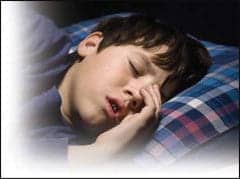Axsome Therapeutics’ CRESCENDO survey finds 77% of narcolepsy type 1 patients continue to experience cataplexy attacks despite being treated.
Summary: Axsome Therapeutics, in collaboration with Narcolepsy Network, conducted the CRESCENDO survey, revealing ongoing challenges faced by narcolepsy patients despite treatment. The study involved 203 adult patients diagnosed with narcolepsy type 1, highlighting persistent symptoms such as cataplexy, excessive daytime sleepiness, and cognitive impairment. Despite receiving pharmacotherapy, patients reported significant burdens on their professional, social, and day-to-day lives.
Key Points:
- Despite receiving treatment, a majority of narcolepsy patients reported persistent symptoms, including cataplexy, excessive daytime sleepiness, and cognitive impairment.
- The survey, conducted in partnership with Narcolepsy Network, included 203 adult patients diagnosed with narcolepsy type 1, providing insights into the patient experience and the burden of illness.
- Axsome Therapeutics plans to present detailed results from the CRESCENDO survey at upcoming scientific meetings.
Axsome Therapeutics announced topline results from the CRESCENDO (Characterizing Patient Perspectives on Unmet Needs in Narcolepsy) survey of patients with narcolepsy type 1 receiving treatment, demonstrating high rates of persistent symptoms and significant patient burden despite being on current treatments.
CRESCENDO was conducted in partnership with Narcolepsy Network, a national nonprofit patient support organization for people with narcolepsy, idiopathic hypersomnia, and related sleep disorders.
The CRESCENDO survey included 203 adult patients diagnosed with narcolepsy type 1, who collectively have more than 2,600 years of lived experience with the sleep disorder, to understand their experience and journey, to measure disease symptoms including cognitive impairment while on treatment, and to assess the burden of illness, comorbidities, and unmet needs and challenges patients face.
To quantify key elements of the narcolepsy patient experience, CRESCENDO utilized patient-reported measures and validated scales, including the Epworth Sleepiness Scale to assess excessive daytime sleepiness and the British Columbia Cognitive Complaints Inventory to assess cognitive function.
All patients taking part in the survey were currently undergoing treatment for narcolepsy type 1. The most common treatments were wake-promoting agents (about 53% of surveyed patients), oxybates (47%), and stimulants (42%).
Despite receiving treatment, the majority of narcolepsy patients continued to experience symptoms. Cataplexy was reported by 77% of patients while on their current treatment regimen. Excessive daytime sleepiness, assessed using the Epworth Sleepiness Scale (scores > 10), was observed in 64% of patients despite receiving current treatments. Cognitive impairment, assessed using the British Columbia Cognitive Complaints Inventory (scores ≥5), was observed in 74% of patients. Depression and anxiety were experienced by about 45% and 57% of patients respectively.
“Unfortunately, narcolepsy is underrecognized and underdiagnosed by the medical community, and its burden of illness is not widely understood or appreciated, which is why the CRESCENDO survey is such an important step forward in raising awareness of narcolepsy and its impact on patient lives, and in giving voice to the thousands of individuals living with this debilitating disorder,” says Karl Doghramji, MD, FAASM, professor of psychiatry, neurology, and medicine and medical director of the Jefferson Sleep Disorders Center at Thomas Jefferson University, in a release.
Axsome plans to present the detailed results of the CRESCENDO survey at upcoming scientific meetings.
Key Topline Findings from the CRESCENDO Survey

Patient demographics
- Survey respondents consisted of a total of 203 adults, aged 18-82 years (mean 41 years) with a diagnosis of narcolepsy Type 1, all of whom had experience with US Food and Drug Administration-approved treatments for their narcolepsy.
Current treatments and comorbidities
Subjects were receiving pharmacotherapy for narcolepsy.
- The most common narcolepsy-specific treatments were wake-promoting agents (53% of surveyed patients), oxybates (47%), and stimulants (42%).
- 37% of participants were diagnosed with depression, of which 80% were taking medication to manage their depression.
- 37% of participants were diagnosed with anxiety, of which 72% were taking medication to manage their anxiety.
Prevalence of narcolepsy symptoms while on treatment
- Cataplexy was reported by 77% of patients while on their current treatment regimen.
- Excessive daytime sleepiness, assessed using the Epworth Sleepiness Scale (scores > 10), was observed in 64% of patients despite receiving current treatments.
- Cognitive impairment, assessed using the British Columbia Cognitive Complaints Inventory (scores ≥5), was observed in 74% of patients on treatment.
- 68% rated their ability to concentrate as poor, very poor, or average.
Cataplexy impacts on daily life
- 65% of participants currently experiencing cataplexy reported that cataplexy burdens their professional life (e.g. career, school), despite treatment
- 60% of participants currently experiencing cataplexy reported that cataplexy burdens their social life, despite treatment.
- 50% of patients currently experiencing cataplexy reported that cataplexy burdens their day-to-day life, despite treatment
- 64% and 68% of patients experiencing cataplexy reported being embarrassed by falling down and slurred speech, respectively, despite treatment.
The survey was conducted between October and December 2023.
Photo 83826926 © Antonio Guillem | Dreamstime.com




![Discussing the Symptoms, Misconceptions, Social Relationships, and Struggles Encountered by Patients with Narcolepsy [Interview][Transcript]](https://sleepreviewmag.com/wp-content/themes/Extra/images/post-format-thumb-text.svg)